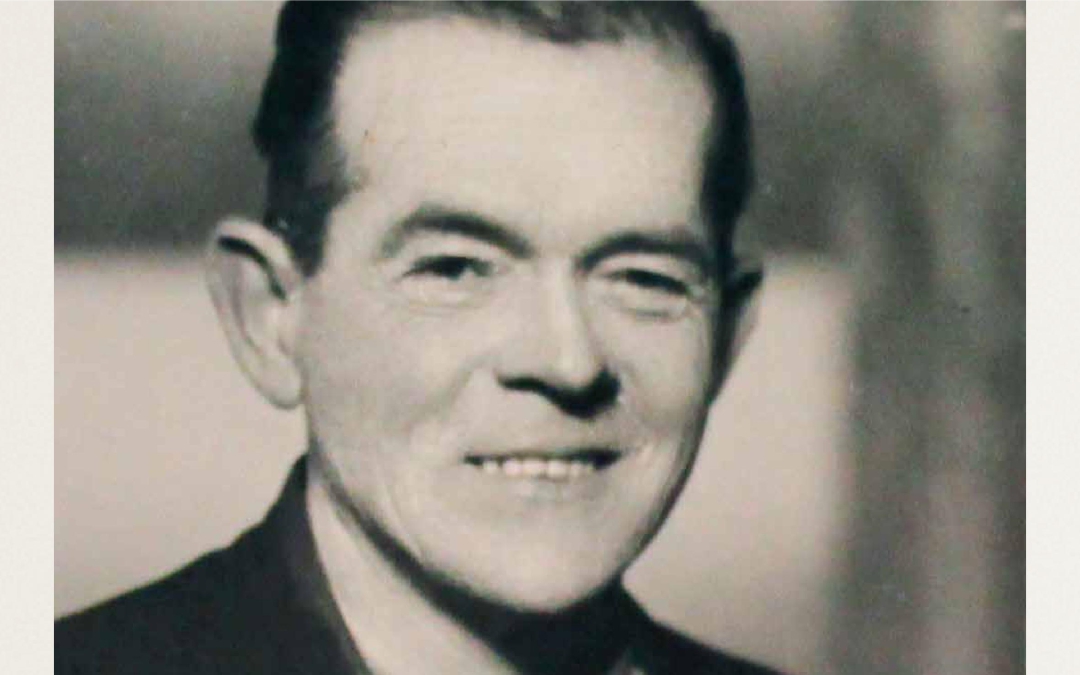Affectionately known as Grandfather Kratina, the one who “had something of the colour of an angel from Mileševa” in his eyes, passed away on this day, September 30th, 1973, in Belgrade. Quiet and unobtrusive, devoted to his work, Jaroslav Kratina will make the greatest contribution to our fine arts as one of the first copyists and fresco-painting lecturers at the Faculty of Fine Arts in Belgrade.
The need for the skill of making copies of frescoes, which Jaroslav Kratina will perfect and gladly pass on to future generations, took root in the middle of the nineteenth century in order to prevent the inexorable decline of medieval wall painting in the effort to “preserve it for the history of Slavic life”. Antiquities researchers made sketches and sometimes copied the frescoes in order to study them after returning from the field. In order to make it easier to access the material and preserve the endangered frescoes, they suggested that they be taken down and transferred to the museum. Fortunately, these proposals were thwarted because it was estimated that such a procedure could endanger both the frescoes and the architecture of the monument.
At the beginning of the 20th century, the idea of establishing a gallery of painting copies and plaster casts, which would have an educational role in addition to the exhibition, which would be achieved through connection with the College of Fine Arts, but also the teaching of fine arts in secondary schools, with the desire to “display the entire Serbian national treasure through copies, from ancient times to the present day”. However, only after the end of the Great War, the copies of the frescoes get their place in the exhibition spaces, and visitors are told “not to complain that they are looking at copies and not the originals, because for the presentation of immovable cultural monuments of the Middle Ages, the role of the copy is important because it allows a direct comparison painting from various eras, and through them it also shows the technology of fresco through medieval painting”.
Such a spirit of the times gave birth to the artistic personality of Jaroslav Kratina, whose creativity in the field of copywriting, conservation and restoration dates back to 1921. when he makes his first copies. Kratina’s fascination with the beauty of Byzantine painting resulted in dedicated and continuous work on the affirmation of medieval art, which began with the permission to have copies of his frescoes, the most famous of which from the Gračanica church, the Nerezi monastery and the Sopoćani monastery, be reproduced in three issues of the magazine “Raška” published in Serbian, French and the German language. He will experience the peak of his copyist career in 1950 as a member of the organizing committee of the exhibition “Yugoslav Medieval Art”, held at the Museum of French Monuments, in the Palace of Chaillot in Paris, where, in the text of the exhibition catalogue, Paul Deschamps, director of the Museum of French Monuments, will mention him as one of the best Yugoslav copyists.
In the Art Museum, due to “specialization in copying frescoes and the skill of removing old frescoes” he will find himself after the Second World War. However, since in the impoverished country there were not enough funds and conditions to keep Kratina in the museum, as an adequate staff with experience in art and teaching work, he was sent to the Academy of Fine Arts as a fresco painting teacher. There, until his retirement in 1961, he will remain a favourite among the students whom, judging by the obtained characteristics, he managed to instill “interest and love in getting to know the technique of fresco painting”, where “as a teacher he has the qualities of an honest teacher who selflessly gives his knowledge and experience to the younger ones” dedicated and patriotic.
How much this “nice, sincere and good-natured old artist, whose bright blue, boyishly lively eyes are in sharp contrast with the face that countless wrinkles have made older than he is”, loved his country and sincerely worked for it is illustrated by the detail from 1957 where he asked for the help of artists in order to reward the cooperative that achieves the best results in the territory of the Republic of Serbia by painting a cooperative home with motifs of the national liberation struggle and life in the countryside, considering it the most suitable way to bring art closer to people, “since it is about the motifs and technique of painting that can be understood by the broadest classes”. In his statement, he will conclude enthusiastically: “As for me, I’m ready — I’m just waiting to see who’s the winner, then get to work!”
Jelena Marković
art historian, volunteer
National Museum Kraljevo
